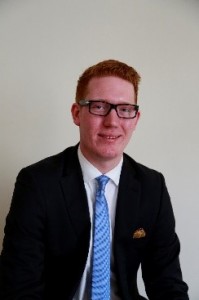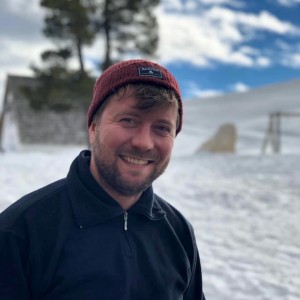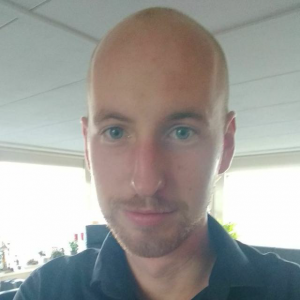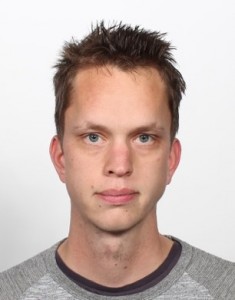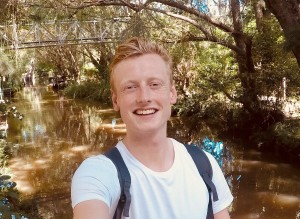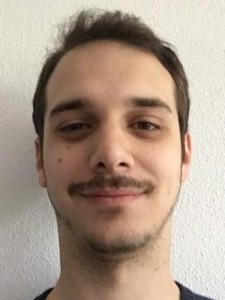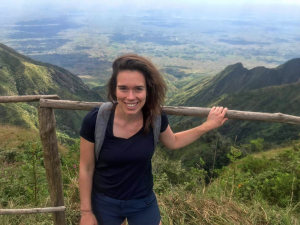Tobias Klapper
MSc topic: Comparison of UAV-based LiDAR and Photogrammetry; Case Study: Litchfield SuperSite, Australia
In the last decade Light Detection and Ranging (LiDAR) and structure-for-motion (SfM) photogrammetry became the two leading techniques for gathering 3D point cloud data. The low costs for UAV-based SfM photogrammetry is one of the main advantages of this technique. LiDAR on the other hand has the advantage that it allows to map the ground even with vegetation cover. It was found that the photogrammetric derived digital models can be used as an alternative to the LiDAR derived models and further it can be used as an alternative for estimating most of the forest parameters.
Sander van der Klei
MSc topic: The Role of Geospatial Technologies in Building Smarter Cities
My thesis reviews the smart city concept in relation to geospatial information and technologies. It aims to do so by defining the ideal smart city information system and comparing this with a prototype geospatial information model in 3D CityGML. Also, an overview is given of geospatial applications in smart city development. As cities are spatial entities, geography and geospatial technologies can play a major role in enabling the smart city concept (Percivall et al., 2015). Geographic Information Systems (GIS), being ICT technology, can therefore serve as centralized information systems which integrate all aspects of processes in cities that wish to be ‘smart’.
Kilian Linnekamp
MSc Topic: Modelling Shared Space: an Organized Chaos
Increased traffic pressures in the city of Amsterdam are leading to a lack of space for cyclists and pedestrians. In search of creative solutions the municipality of Amsterdam has chosen to implement a Shared Space area next to the ferry docks at Amsterdam Central Station. This research has sought to simulate and analyze the movements and interactions of the users of this Shared Space, by developing an Agent Based Model. In order to gain insight into the amount of people the Shared Space can handle, a number of real-life scenarios were tested, varying in agent densities, ratios and traveling directions. The main results suggest risks of unacceptably low average velocities are greater than risks of increasing amounts of agent conflicts.
Jesse Gruijters
MSc Topic: Weather conditions and route choice of cyclists: Investigating the impact of weather conditions on the route choice behaviour of commuting cyclists in the Netherlands
The aim of my thesis was to investigate the effects of weather conditions on the route choice behaviour of commuting cyclists using GPS trajectories. I concluded that not all weather conditions influence route choice behaviour of commuting cyclists. The influence of wind, precipitation and temperature on age and gender were noticeable, however, these effects remain minimal. The presence of daylight was no significant predictor of route choice behaviour. Still, temperature and precipitation had positive effects on absolute deviation. Within this study, relative deviation could not significantly be explained by weather conditions. Within this study, personal characteristics and weather conditions did not significantly influence commuters’ choice to cycle through specific spatial environment categories.
Andries Boomsma
MSc Topic: A spatiotemporal bottom up population estimation using the k-NN algorithm and a building shadow analysis
The geographic knowledge regarding the characteristics of Informal Settlements is still limited. One geographical element which is still relatively unknown is the demographics of Informal Settlements . In this thesis a spatiotemporal analysis has been done to estimate the population of the Informal settlement Dharavi (India) by developi ng a bottom – up population model comparing the year 2009 to 2019 using two remote sensing images. Special emphasis has been place d on the vertical dimension , since this element has been barely researched in Informa l Settlement studies. Four main steps have been carried out to obtain a population estimate of Dharavi . Firstly, an object – based image analysis , using the k – NN algorithm, has been performed to obtain the aggregated amount of low – rise and high rise rooftop . Secondly, a building shadow analysis has been done to obtain the height of low – rise buildings. Thirdly, ground truth and web sources were used to obtain the height of high – rise buildings. Fourthly, the aggregated amount of rooftop and the height of the lo w – rise and high – rise buildings have been combined with Dharavi household characteristics from the literature in order to obtain a population estimate of Dharavi.
Angelina Savchuk
Msc Topic: Use of nighttime light satellite imagery to monitor conflict dynamics
This research assessed the possibilities of using the nighttime light (NTL) satellite imagery to monitor conflict dynamics in the Eastern Ukraine. The NTL shows which areas have a light decrease/increase, revealing the most impacted areas and those considered safe. It was concluded that cities located in the conflict zone or adjacent to it lose between 30 to 70% of light. Large cities that become home to Internally Displaced Persons had their light increased by 10%, showing that NTL can be used for studying migration patterns too. There is an undeniable relation between NTL and the number of fatalities; however, this correlation is only clearly visible at the beginning of the conflict.
Jan-Willem Weststeijn
MSc topic: A spatiotemporal approach to model the impact of weather on the migration of Yellow-browed Warblers in Europe
The Yellow-browed Warbler (Phylloscopus inornatus) is an interesting passerine with its nocturnal migration and autumn occurrence in Europe. Breeding in Siberia, its wintering areas are predominantly in South-East Asia. Therefore, the increase in records of this species in Europe is
fascinating. Hypotheses of this phenomenon have been based on explanations that make use of different internal and external features, like genetic misorientation (i.e. reverse migration theory, dispersal movements) and regulating environmental influences like wind drift and other weather
conditions. However, specific studies into the effects of the meteorological variables have not been conducted, and especially not on a large-distance migration scale of this bird species.
To this end, this study develops an agent-based model according to the ODD-protocol, programmed
in Netlogo, in combination with a sensitivity analysis considering the OFAT-method in order to verify
the influence of the weather on the bird migration flight track and occurrence.
As a result, the sensitivity analysis of the wind drift gives the most reliable outcomes. The best fitted
model simulation was found between 10 and 15 degrees wind drift tolerance in
combination with a preferred flight direction that takes a great-circle route. However, the significant
ratio of dissimilarity that is left hints towards more complex (short) decision-making processes
concerning migration flight, tipping-points, adaptation and non-linear interactions. However, many
variables and processes in the long-term migration cycle are still not well known and consequently
give opportunities for future model optimization analyses and improvements.
Oscar Stoop
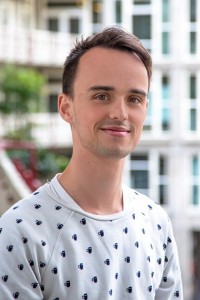 MSc topic: Exploring the added value of a 3-dimensional city model for stakeholder participation within collaborative spatial planning
MSc topic: Exploring the added value of a 3-dimensional city model for stakeholder participation within collaborative spatial planning
Planning support systems (PSS) can be used to aid a spatial planner in resolving complex planning issues. However, current adaptation of PSS systems is lacking, with a multitude of bottlenecks often preventing the successful adaptation of a PSS. This research finds that making use of a 3D digital city model (3DCM) for stakeholder collaboration as part of a PSS is experienced as a major step forward in PSS usability. However, this research also finds that many 3DCMs are still in development, limiting the currently available for testing the experienced added value. Therefore, this study recommends to further investigate the added value a 3DCM can offer ones more 3DCMs become available. Doing so will contribute in taking full advantage of the added value a 3DCM can offer.
Jasmijn Kok
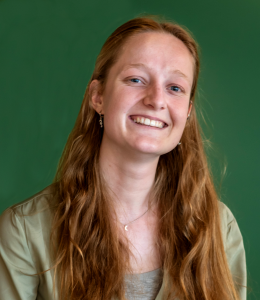 MSc topic: Simulating tick bites in the Netherlands using agent-based modelling
MSc topic: Simulating tick bites in the Netherlands using agent-based modelling
The aim of this research is to develop an agent-based simulation model for tick bites and to calibrate it using volunteered geographical information. Since the mid-90s, the number of tick bites and cases of Lyme disease in the Netherlands has tripled, which means that there has been a huge increase. The chance of getting a tick bite depends on tick densities, influenced by environmental factors, and human exposure, influenced by human activities. The model of this research includes these two elements, finding out which element has more influence. Besides that, the output of this model can be compared to data of Tekenradar which allows for model calibration.
Laurens Bakker
MSc topic: The traveling Employees Problem
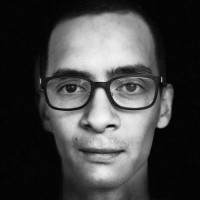 Student employment agencies face the daily challenge of making sure that their employees reach the scheduled work location on time with as little travel time as possible, all the while trying to keep the financial cost low. This problem could be called the Travelling Employees Problem (TEP). In my Msc. thesis a heuristic model (called TESS) was created and implemented to solve the TEP. TESS was successful in solving the TEP. TESS is faster and more consistent in solving the TEP compared to humans. On the other hand, humans are in difficult situations better at solving the TEP. Therefore TESS should be seen as a tool for humans, not (yet) as a replacement.
Student employment agencies face the daily challenge of making sure that their employees reach the scheduled work location on time with as little travel time as possible, all the while trying to keep the financial cost low. This problem could be called the Travelling Employees Problem (TEP). In my Msc. thesis a heuristic model (called TESS) was created and implemented to solve the TEP. TESS was successful in solving the TEP. TESS is faster and more consistent in solving the TEP compared to humans. On the other hand, humans are in difficult situations better at solving the TEP. Therefore TESS should be seen as a tool for humans, not (yet) as a replacement.
Joris Timmermans
MSc topic: Exploring the value of the Bregman Block Average Co-clustering algorithm for missing value imputation in georeferenced time series.
Missing values in data sets introduce uncertainty in analysis. Modern machine learning approaches are widely used to impute non-spatial data. My MSc thesis explored the value of an state of the art machine learning model to impute missing data in spatio-temporal time series. It performed better or as well as a selection of spatial interpolation and machine learning models. Especially for very large data sets for which computational requirements favour spatial accuracy.
Sara Franken
MSc topic: Greening the grey – a spatial multi-criteria analysis to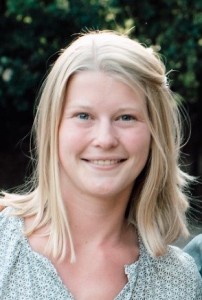 identify and prioritize urban greening locations in Amsterdam-Zuid.
identify and prioritize urban greening locations in Amsterdam-Zuid.
This research aims to make Amsterdam more sustainable by looking at possible locations for urban parks. The results of this study indicate that there are enough potential locations for an urban green space, as ninety-nine suitable locations are identified. All 99 potential locations are prioritized by five urban liveability issues and the connectivity of the location. All values are classified based on low to high priority, and assigned to the potential urban park locations. 9 out of the 10 highest priority locations are in Stadionbuurt, these are the potential urban park locations that will benefit most from the transformation into an urban green space.
Reinder Reindersma
MSc topic: Capturing Sedimentary Outcrops in 3D – Putting the Geologists’ Needs into Practice.
Geological sedimentary outcrops provide very valuable information to geologists, but are very vulnerable to erosion and destruction by man. By digitally preserving them as 3D models, they can be visualized, analyzed and re-visited in the office, even after their destruction. In order to identify the needs of the potential users, a group of 15 expert geologists was interviewed about the usage and requirements of Digital Outcrop Models (DOMs). The results were used to create a series of 3D models with Structure from Motion, a low-cost, user-friendly photogrammetric technique, in combination with an UAV (drone) to collect data. By georeferencing the models with sufficient accuracy and precision, they can be combined with other geological data in a GIS. Models on different scale levels were combined into nested models, that offer the ability to create virtual viewpoints, swap between scales, and collect data from areas that are physically unreachable, which will all help to see the larger geological perspective of an area.
Thomas Lier
MSc topic: Encounter Probability of Inland Maritime Traffic.
The main objective of this thesis was to develop a method to analyse and manage historic AIS data efficiently, and combine this with waterway characteristics to find manoeuvring points that help with the creation of an encounter probability risk map. By applying the chosen theory on a grid-based design, the main factors determining the encounter probability in a given area point out to be: ship density, collision diameter and the relative velocity of the ships. Using mathematical, probabilistic concepts, an encounter probability can be calculated, from which a risk map can be developed. The practicability and the applicability of the proposed approach and its integrated management of data was proved in a case study with historic AIS data. The case study has only shown a brief inside in the extensive possibilities of analysing inland maritime traffic.
Vivian Emanuel Strasser
MSc topic: Assessing the spatial context of sentiments in geo-social media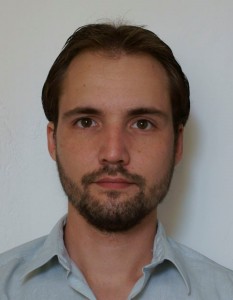
This research aims at assessing sentiments and their spatial context at hand of Twitter and Flickr data. Contents are assessed and classified regarding the sentiments they contain. Options to derive accurate location information are reviewed and employed. Representative data samples of the respective population are created, with minimized bias towards certain user groups. Average sentiment scores are aggregated for different granularities of administrative area types. The suitability of different output granularities is also subject to investigation. Spatial patterns for sentiments are assessed, and it is inquired if correlations between average sentiments and socio-economic indicators are detectable. The paper investigates to which degree sentiments onsocial media can serve as a socio-economic indicator.
Luca Petrone
MSc topic: Assessing River Dynamics Using a Timeseries of UAV Imagery. A case study of the Petit Buëch river in Hautes – Alpes, Southern France.
The Petit Buëch is a highly dynamic river system in the south-east of France with erosion clear erosion patterns at Le Pont du Chabestan and La Bâtie-Montsaléon, endangering nearby anthropic structure and infrastructure. In order to monitor and study these dynamics, a series of photos captured by a UAV were processed and analysed by applying photogrammetric techniques.
The two study areas already have two sets of photos processed and analysed (2014 and 2015) and these sets were integrated in a timeseries with the results of this thesis. With Agisoft PhotoScan and the SfM algorithm, the processed imagery yielded two OrthoMosaics and two DEMs used to carry out a qualitative and quantitative analysis of the two areas. The results of these analyses are a clear displacement of the river path and the change in volume of the banks.
Jozef à Nijeholt
MSc topic: Using Agent-Based Modeling to evaluate the health impact of faecal pathogens in fountain water in Amsterdam
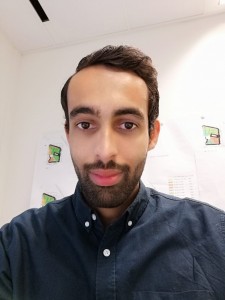
This study aims to assess how Agent-Based Modelling can be used to evaluate the health impact of faecal pathogens in fountain water. To do so, a model was developed that simulates individual exposure to E.coli at three different fountain locations in Amsterdam, the Netherlands. The project shows that it is possible to evaluate factors contributing to E.coli exposure with the use of an Agent-Based Model. The experiments show that exposure to E.coli mainly occurs due to direct contact with water. Secondly, it was made clear that the number of visitors can strongly influence the infection of the fountain and therefore also determines the number of exposed visitors. At last, according to the model we see that increasing the frequency of cleaning proves to be the most successful management strategy. This approach lowers the chance of exposure and therefore limits the number of exposed visitors.
Laurens Kik
MSc topic: Comparing the effect of SAE-2 and SAE-4 equipped vehicles on stop-and-go waves at bottlenecks
Self-driving cars have the potential to make our highways safer and reduce traffic waves. With a MATLAB model this research showed that SAE level-4 vehicles are able to increase the capacity of the highway with 66.7% and let stop-and-go waves disappear completely. Lower level vehicles (SAE-2) make the roads safer but slower. Unsafe, hard-breaking actions were avoided, but more slowdowns were observed and the average speed dropped. Combinations of human-driven, SAE-2 and SAE-4 vehicles which are likely to be found in the future aren’t promising in sake of capacity and speed, but the safety is likely to increase.
Joep Kelderman
MSc topic: The effect of the built environment on bicycle use
This research investigates the relationship between the built environment (density, diversity and design) and bicycle use. Using travel behavior data from the Dutch Mobility Panel (KiM) and spatial datasets, characteristics of the built environment are derived using GIS. A statistical regression model is used to estimate the exact relationship between the built environment and bicycle use. The research proves that dense built environments show higher rates of bicycle use. It also indicates that built environments with bicycle friendly infrastructural designs tend to have a higher share of bicycle use, while this should be further researched to draw specific conclusions from.
Ronja van der Roest
MSc topic: Habitat suitability mapping for Tursiops truncatus in the Aegean Sea
This research project looked at environmental factors and their influence on the favourable habitat of the common bottlenose dolphin throughout the year in the Aegean sea. When it is known where the favourable habitat of these dolphins is during the four seasons, a more flexible and effective way of conservation management can be applied. The results show that there is a difference in the likelihood of occurrence of the common bottlenose dolphin per season, indicating that based on the analysed environmental factors within this research, there is a difference in favourable habitat throughout the seasons. This research can be seen as a first step towards more flexible and species-specific conservation management.
Nina Jensen
MSc topic: Using agent-based modelling to explore the influence of canal cruise docks on the crowdedness in the city centre of Amsterdam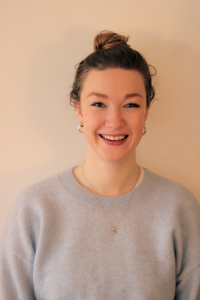
An agent-based model was developed to research the influence of the locations of the canal cruises on the crowdedness caused by tourists in the city of Amsterdam. The model simulates the movement patterns of tourists that take a canal cruise based on two scenarios: the current dock locations and the new dock locations outside the city centre. The agents in the model are based on an operationalization of the actual tourists in Amsterdam. The results from show that the relocation of the docks could lead to the spread of tourists towards the neighbouring areas of the city centre. However, the city centre remains the most crowded area, because a lot of the other activities that tourist engage in on their trip in Amsterdam are still clustered in or nearby the city centre.
Robert van Hoek
 MSc topic: Empirical foundation of User Generated Content as input for policy making.
MSc topic: Empirical foundation of User Generated Content as input for policy making.
This thesis shows how to fulfill the potential of UGC data based on a specific research topic; recreational cycling. Within this field of research the disadvantages of the ‘traditional methods’ are more and more emphasized. The research objective of this thesis is to find spatial patterns of recreational cycling from UGC and to provide meaningful information for the policy making institutions, in this case the province of Utrecht. Their requests from could be delivered to a certain extent. Both the busiest cycling areas could be determined with UGC and the popular roads between popular cycling areas. The cycling behavior between several cities is harder to determine because the data is generated by recreational cyclists.
Bram de Rijk
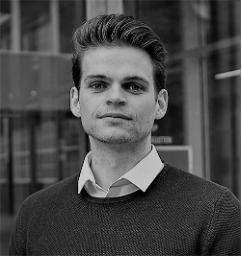 MSc topic: De Woningbouwversneller
MSc topic: De Woningbouwversneller
The analysis to determine the potential that existing residential buildings within the built-up area of municipalities has for increasing urban density. By doing so an quantitative data-driven analysis is performed to identify where there is potential room to realize new houses to relieve some pressure from the housing market, while preserving the green areas outside the built-up areas of municipalities
Misha van der Ven
 MSc topic: Vehicle to Grid in Utrecht. Integrating Electric Vehicles into the Energy System of Utrecht
MSc topic: Vehicle to Grid in Utrecht. Integrating Electric Vehicles into the Energy System of Utrecht
The research aimed at preparing Utrecht for a more energy neutral future. The case was integrating Vehicle to Grid technology into the system. The aim was to allocate V2G charging stations throughout Utrecht to provide enough energy retrieved from car batteries for Utrecht in 2030, where three different scenario’s were used: 2025, 2030 and 2035. What patterns were recognised? The main pattern showed that neighbourhoods which are already experiencing problems, Kanaleneiland, Ondiep and Overvecht, got less chances to participate in V2G. Municipalites or policy makers should consider these outcomes when creating plans for (V2G) charging stations.
Alistair Steward
 MSc topic: Location allocation of mobile hospitals in a Complex Humanitarian Emergency
MSc topic: Location allocation of mobile hospitals in a Complex Humanitarian Emergency
Complex humanitarian emergencies resulting from conflict are catastrophic for public health. Often mobile hospitals are deployed in an attempt to provide support, but choosing an appropriate location in a dynamic conflict environment is challenging. Working with data from the 2017 battle for Mosul, Iraq, I used a genetic algorithm instead of the traditional multi-criteria evaluation approach as the basis of a spatial decision support system. Suitability criteria included safety of hospital patients and staff, the amount of potential patients nearby, and resilient site accessibility. The resulting application was substantially faster than a traditional model developed for the same case study but lacked sophistication when it came to determining service areas and integration with the healthcare network.



